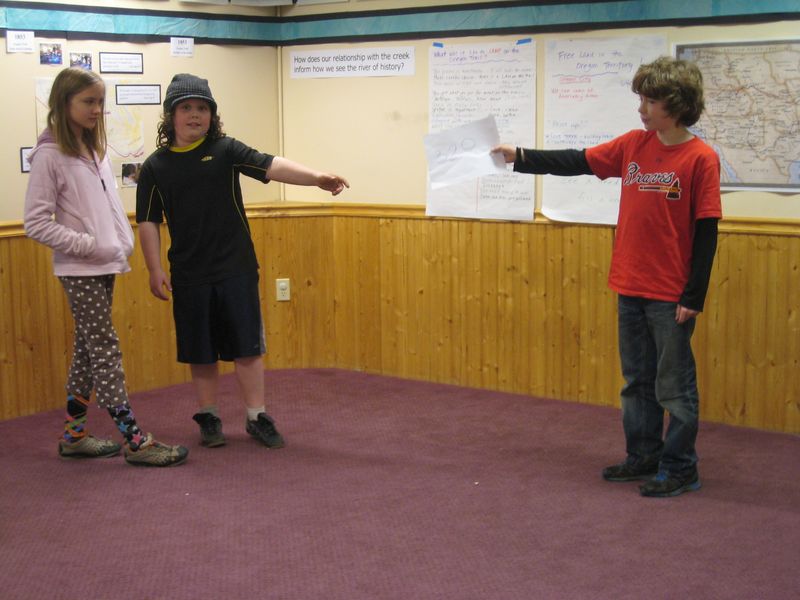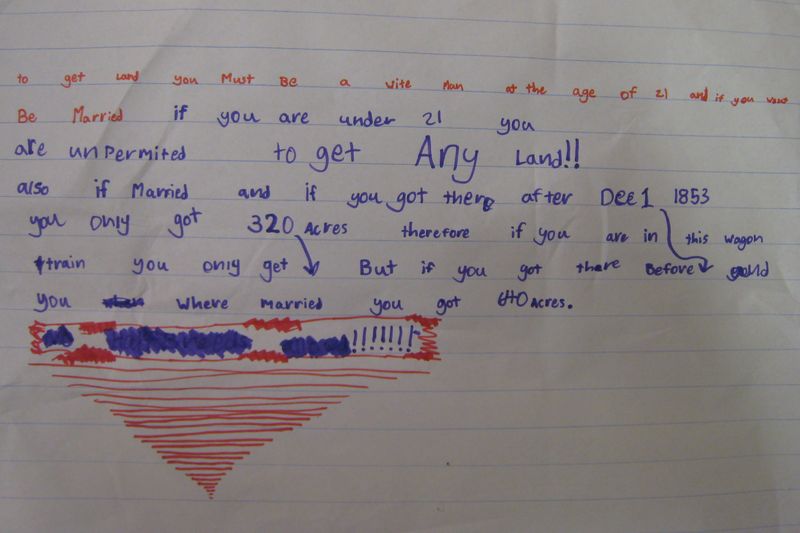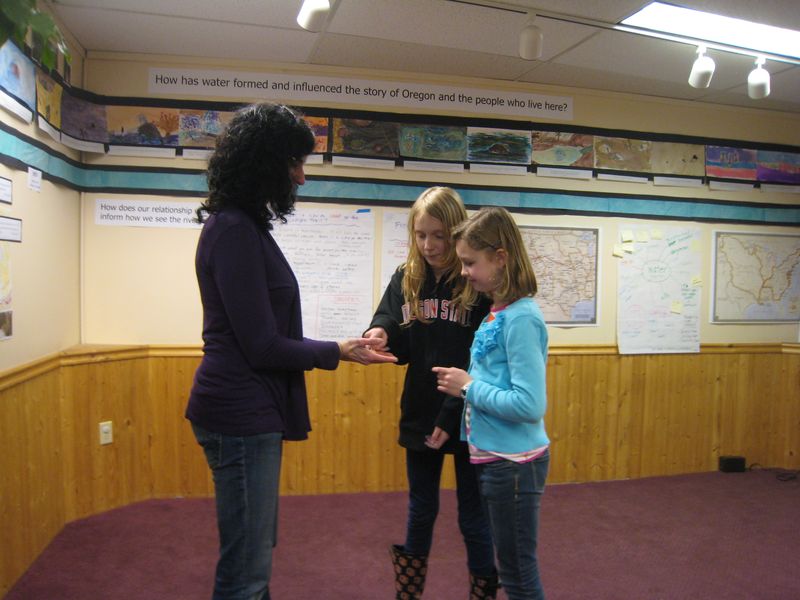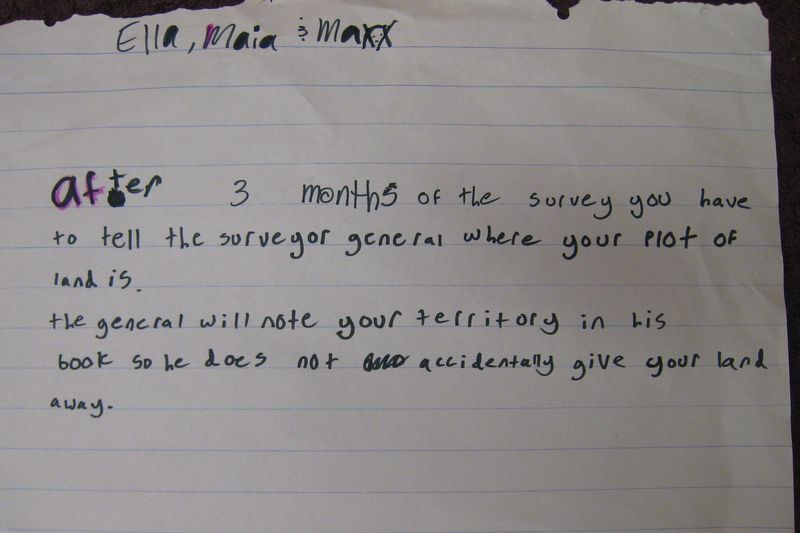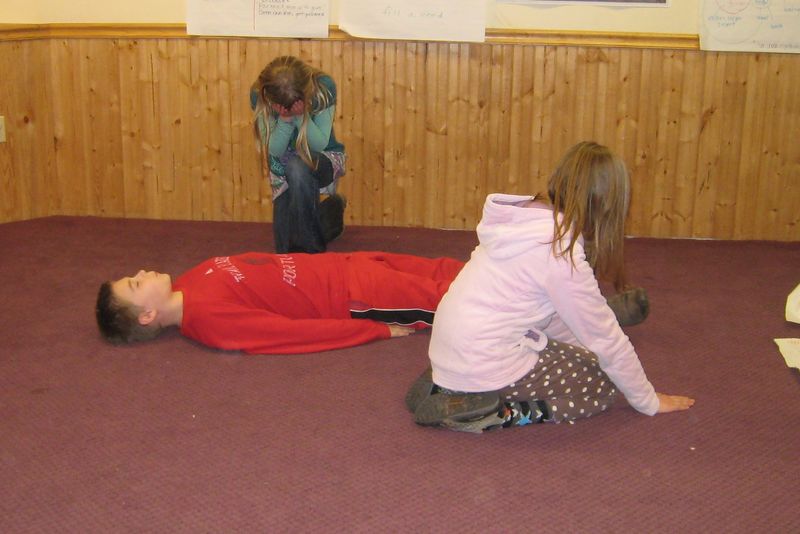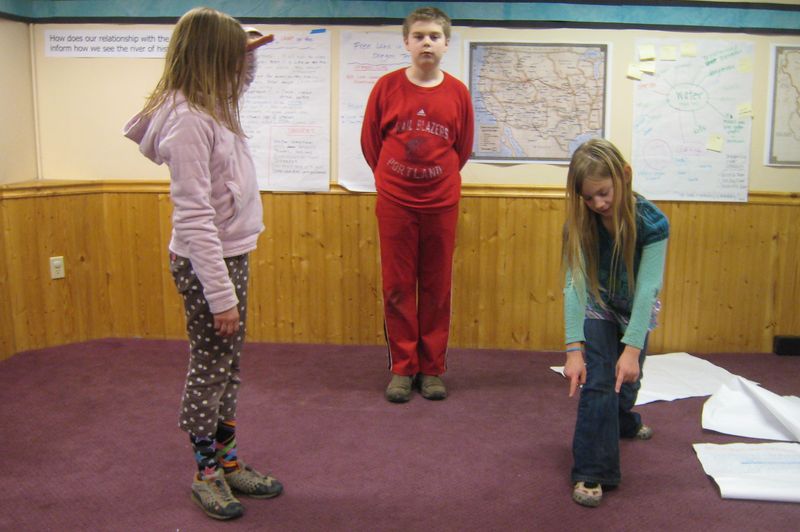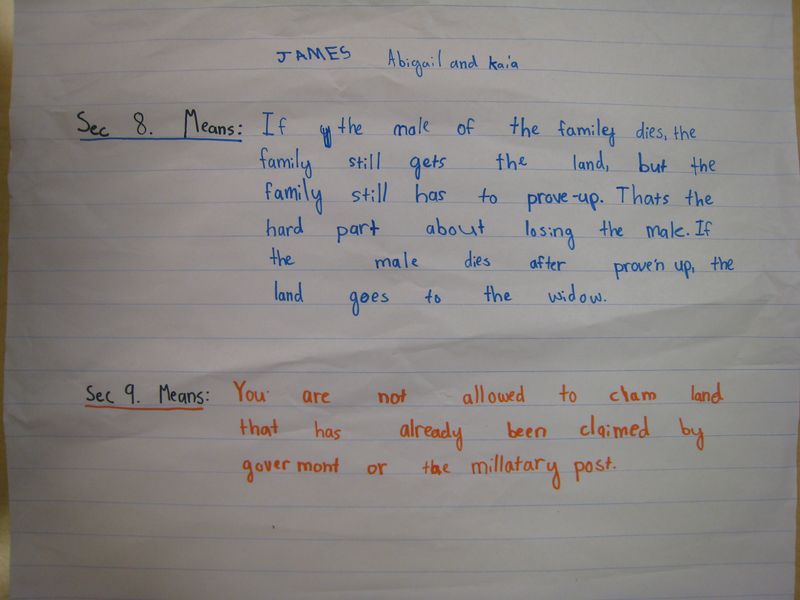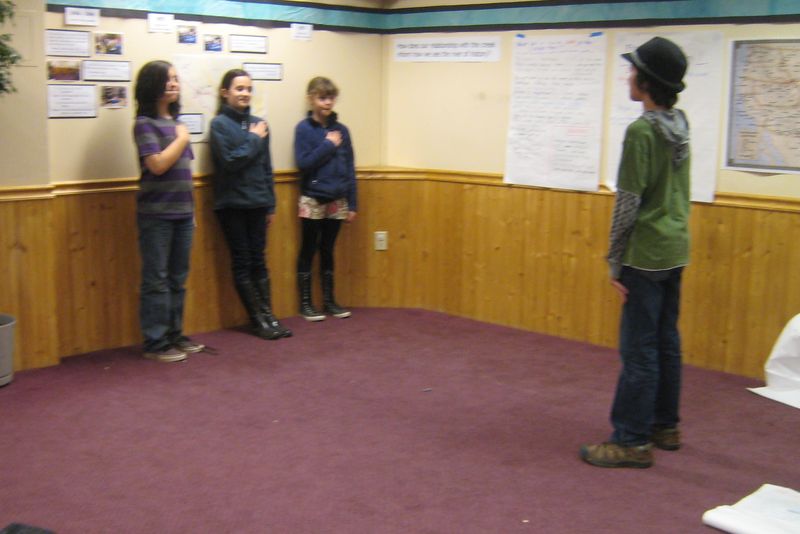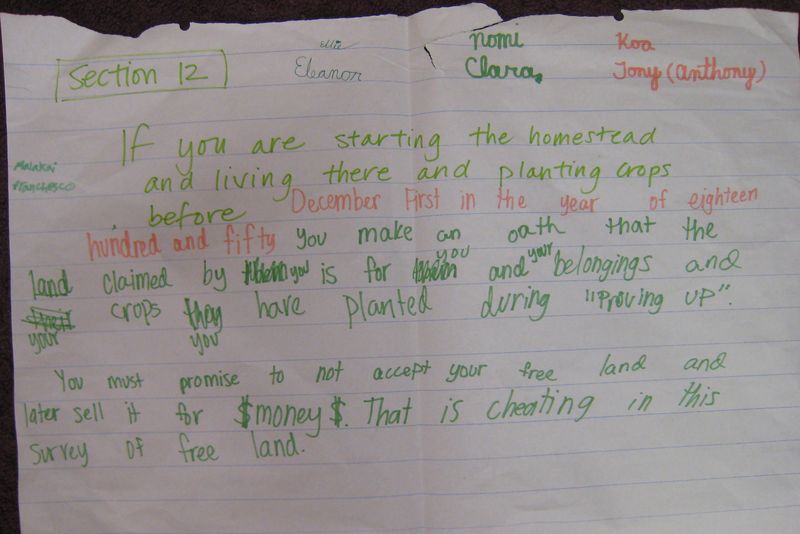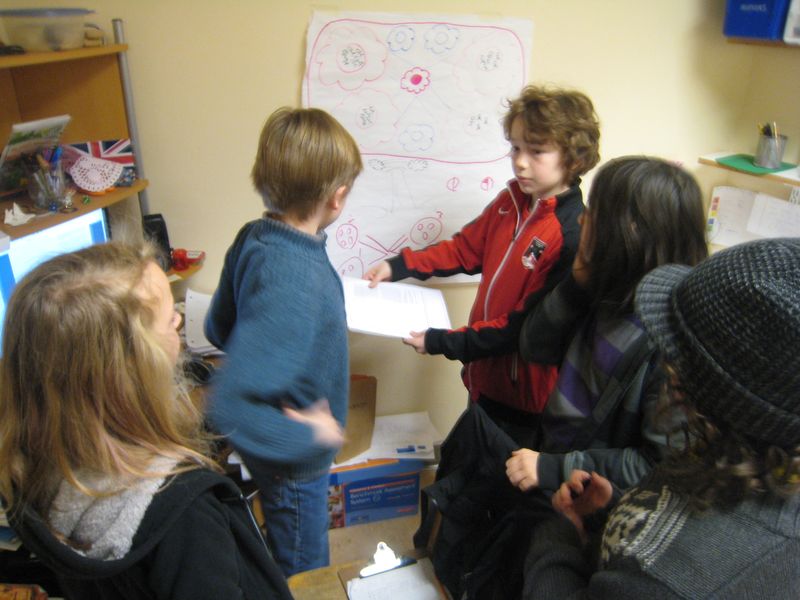How can primary sources inform our understanding of the stories of history?
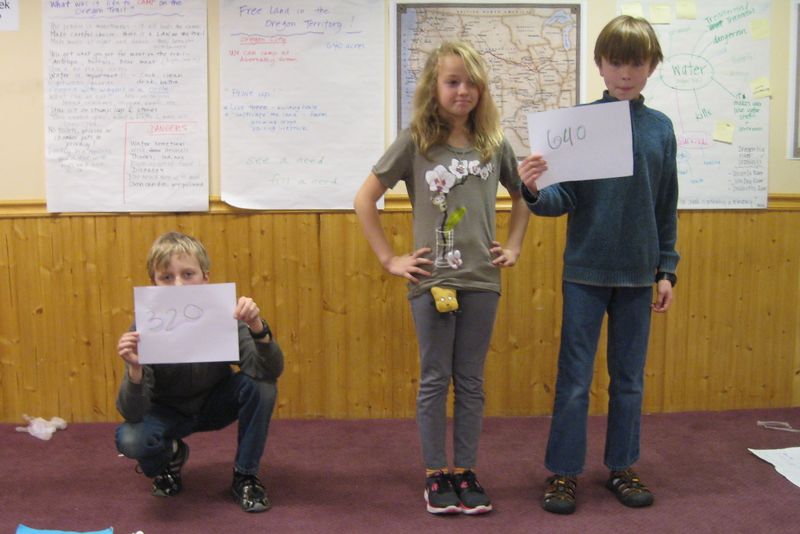
The students in Opal 4 have spent some time “stalled” on the Oregon Trail. They have used this time to deepen their understanding of where they are, where they have been, and where they are going. Most overland emigrants in the 1840s and 1850s were motivated to make it to Oregon Country or Oregon Territory (after it was established in August, 1848) by the prospect of receiving free land, “Donated Land” from the United States of America (an entity that owned it, purportedly, through its purchase from France in 1803).
Some students were counting on their 640 acres of free land, no matter who they were. Now in our classroom drama, we are all overland emigrants in a Wagon Train bound for the Willamette Valley.
In our Wagon Trains we have the five families. Two of the families are made up of a mom, a dad and a child or two. One of the families is now a widow and her two grown children, and another family is a group of orphaned children, and the oldest is an almost 18 year old boy. The male head of the final family is the son of a French Canadian fur trapper father and a Shoshone Indian mother. He is married and has two children.
As RC kept reminding us in his best pioneer voice, “Oregon is the Promised Land! 640 acres of free land for everyone! Anything will grow! The soil is like gold!”
While it is true that through 1853 land was free for the taking in Oregon, it was not true that anyone could take it. There were conditions on who could claim the land, and how that claim was recorded and patented. For our wagon train, planning on arriving in October 1853, the Donation Land Claim Act passed by the US Congress in September 1850 laid out exactly who got land, when and how. We needed to know what was in that Act.
There are accurate, clear, understandable summaries and explanations of the Donation Land Claim Act of 1850 written for all sorts of audiences. I could have told the students what the Act said, but what I knew was that my students were invested in their characters and in their land claims. I couldn’t be the one to tell them that there was a possibility that some of them wouldn’t qualify for land. And I wondered, what would 9, 10 and 11 years olds do with the text of an 1850 Federal Act? Would their immersion in the drama of the time and in the promise of free land be motivating enough to get them through 160 year old legal-ese? How would decoding this text and discovering the nuances of the law of the time inform their understanding of this period in our state’s history?
What role do Primary Sources play in an elementary school classroom?
Of course these incredibly capable, motivated, invested students jumped right into this challenge. The text of the act can be found here. The Act is broken up into sections.
We read sections 1, 2 and 3 together and charted what they meant in words that made sense to us. Then I sent the students off with their families to read one other section of the Act, create a poster that explained what their section said, and then create a tableau that showed what their section said.
Section 4
Section 5
Sections 6 and 7
Section 8
Section 9
Section 12
The depth of understanding demonstrated by the posters and tableau were amazing by themselves, but the excitement and drama that happened as the students discovered what the Act actually said was the other amazing part of this experience.
KB (the widow whose son was almost 18 years old): Can I find someone to marry me? I can’t get land by myself and my son isn’t old enough yet. Who can I get to marry me? Can I make up a man?
MM (the oldest son of the family of orphans who was almost 18 years old): Should we get a family to adopt us?
And eventually…
MM: Levia, this is crazy. Can I be older? Can I be 21?
And the most passionate discussion of them all, one which an Oregon City judge will have to decide for us…
RC: Will half-breeds get land in the Oregon Territory? I think they will. First white male settlers are defined as “white settler or occupant of the public lands, American half-breed Indians included,” even though the words, “American half-breed Indians” aren’t written into the Act the second time they talk about white male settlers, I think they are still included.
MM: No, the second time it is for any time after 1850, so American half-breed Indians were included before 1850 but not after!
And the students start to understand not only the potential impact of this Act, but the power of the ambiguous nature of law. A few days later this group of students informed me that they were going to spend their silent reading time holding a court hearing. They had arranged the judge and the jury (all Opal 4 students) and they were ready. I reminded them that there couldn't be a hearing until we reached Oregon City, but that the lawyers for each side could work on preparing arguments. They did. And they are eagerly awaiting their day in court.



